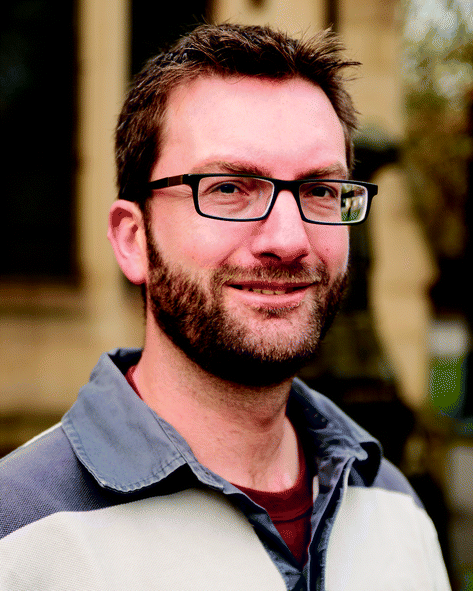
Sustainable materials for chemical manufacturing
Developing sustainable, Earth-abundant photofunctional materials for chemical manufacturing | School of Applied Sciences
Prof. Paul Elliott, Dr Paul Scattergood
Lead Academics
University of Huddersfield, School of Applied Sciences.
Inorganic chemistry specialists, Prof Paul Elliott and Dr Paul Scattergood from the School of Applied Sciences at the University of Huddersfield, have been collaborating with the University of Lund & Universite Toulouse III - Paul Sabatier to develop sustainable photofunctional materials that can be used in sectors like pharmaceutical manufacturing to replace the use of rare elements from the Earth’s crust.
The Project
Photofunctional materials are designed to respond to light in specific ways, such as triggering chemical reactions or controlling drug release. This enables precise control over manufacturing processes, enhancing efficiency, quality and customisation of products.
Using light-activated molecules to mediate photochemical reactions in organic synthesis is commonly used in sectors such as pharmaceutical manufacturing. Many of these photosensitiser molecules incorporate metal elements such as iridium and ruthenium, and whilst suitable for this application, are some of the rarest elements in the Earth's crust.
This project represents a considerable academic challenge in molecular design and synthesis as it explores how to exploit alternative photosensitisers using more Earth-abundant and sustainable elements, such as iron or chromium, that are currently unsuitable for photofunctional applications.

Partner Institutions
- University of Lund
- Universite Toulouse III Paul Sabatier
Rare and heavy elements like ruthenium and iridium are really good at what they do. However, if we are to explore and exploit these very different systems based on lighter and more abundant metals, we must rip up the rule book and learn new molecular engineering strategies from scratch. It’s opening up whole new paradigms in photophysics and photochemistry. It is a really exciting time.
International Partnerships
Supported by the University of Huddersfield’s International Collaborative Fund, and with funding from the Leverhulme Trust, the research targets the synthesis and photophysical characterisaton of highly novel sensitisers based on iron, cobalt and chromium.
The research involves computational studies in collaboration with researchers in Lund, Sweden and Toulouse, France. State-of-the-art femtosecond to picosecond time-resolved transient absorption spectroscopy at the University of Lund is also being used to investigate the elements’ behaviour after absorption of light on ultrafast timescales.
In 2023, Dr Scattergood led an international collaborative research project focussing on the fundamental studies of a novel luminescent compound of the metallic element chromium. Alongside researchers from the University of Sheffield and Lund University in Sweden, the project was able to observe and measure the rate of a process called intersystem crossing for a luminescent chromium compound for the first time.
About the researchers
Professor Paul Elliott is Associate Dean (International) for the School of Applied Sciences at the University of Huddersfield and also Director of the Centre for Functional Materials. He is an inorganic chemist whose research interest lies in the photophysical and photochemical properties of transition metal complexes and their applications.
Find out more about Prof Paul Elliott.
Dr Paul Scattergood is a research fellow at the University of Huddersfield, specialising in synthetic inorganic chemistry with a background in the photophysical study of transition metal complexes.
Find out more about Dr Paul Scattergood.
Sustainability Development Goals related to this project
The content of this publication has not been approved by the United Nations and does not reflect the views of the United Nations or its officials or Member States.
Projects
Interested in seeing our other global research collaborations?
Research
Discover our research in more depth over on our research portal, Pure.
